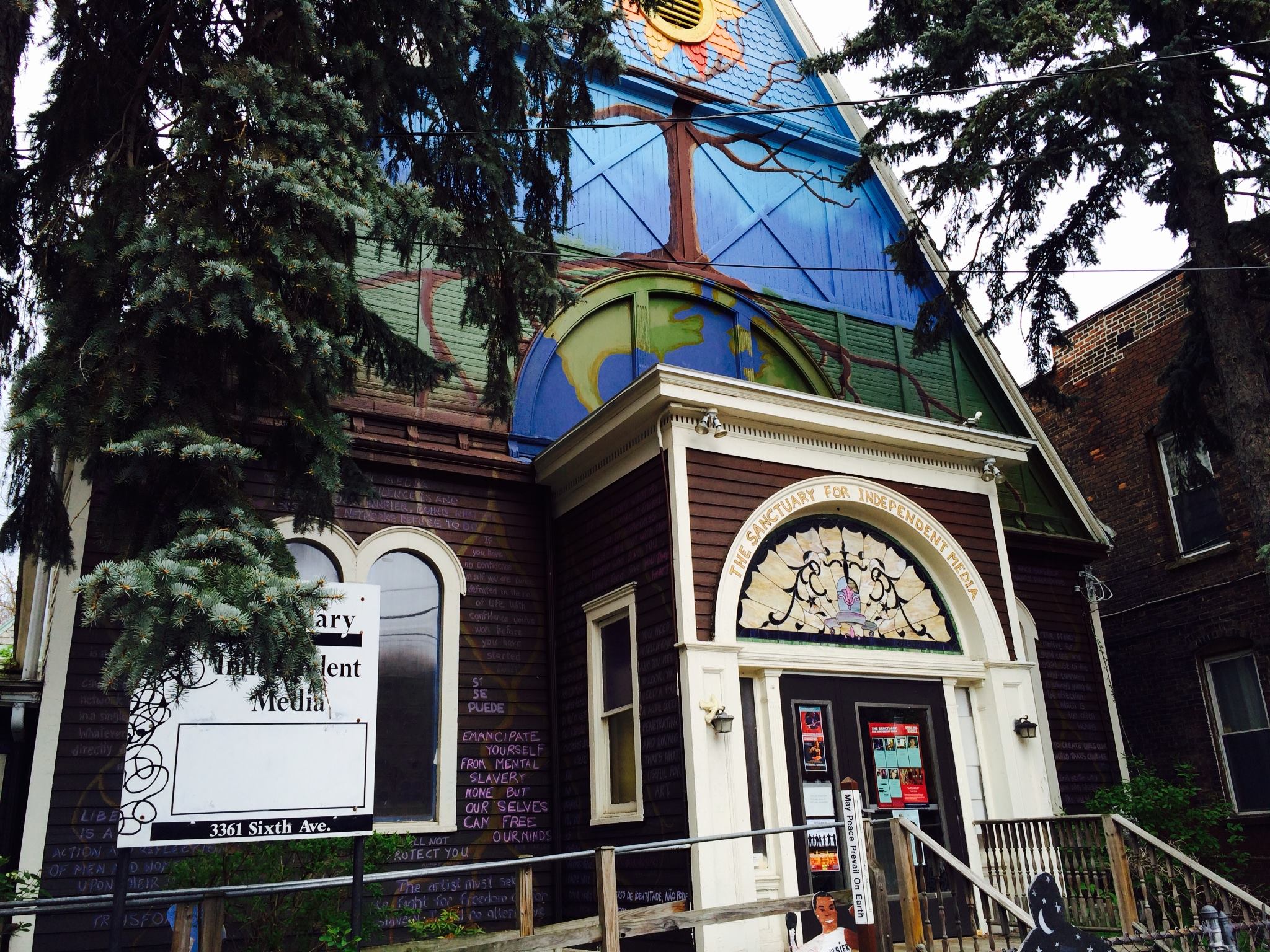Background Research
Dec 7th, 2016 by garcis2
The group started out this project by looking into background information about the Sanctuary for Independent Media. As detailed on their website, the Sanctuary for Independent Media is an arts and telecommunications non-profit located in North Troy (Figure 3). In addition to hosting film screenings, concerts, and workshops, the Sanctuary sponsors a wide range of other projects, including a small radio station, a community garden, a youth education program, and independent art projects. Ethnographic work on-site re-emphasized this, but also highlighted issues the Sanctuary staff had with branding and generating community interest. After some deliberation, the team decided that this problem space would be interesting to explore, and resolved to explore it specifically through the form of informational kiosks.

Figure 3. The Sanctuary for Independent Media
Various methods of presenting information were examined, as well as external features that could add an extra dimension of interactivity or interest. It was during this period that the idea of emulating a tower viewer came up. A tower viewer is a set of binoculars that one would normally find mounted on top of a building or interesting tourist attraction (Figure 4). They are meant to attract people to take a closer look at their surroundings, or appreciate the view. The idea of eliciting the same sensation in the context of an ostensibly regular street corner was intriguing, and was substantiated by similar attempts in other areas (see: A City With A View, OWL). Within the context of the Sanctuary’s needs, this tower viewer kiosk would need to be inexpensive, low-tech, easy to maintain, and durable. Stereoscopic photography in the form of a View-Master seemed like the perfect way to display information within these constraints.

Figure 4. Tower Viewer
With an idea now in mind, the team returned to the Sanctuary to explore possible avenues it could explore using the tower viewer. This time, the Sanctuary was hosting a Film Festival about local neighborhoods’ health and encroachment, and so the team was able to learn more about the surrounding area, as well as the mentality of its inhabitants. With additional stories in hand, the team went about generating the first iteration of what would become the ObservaStory.